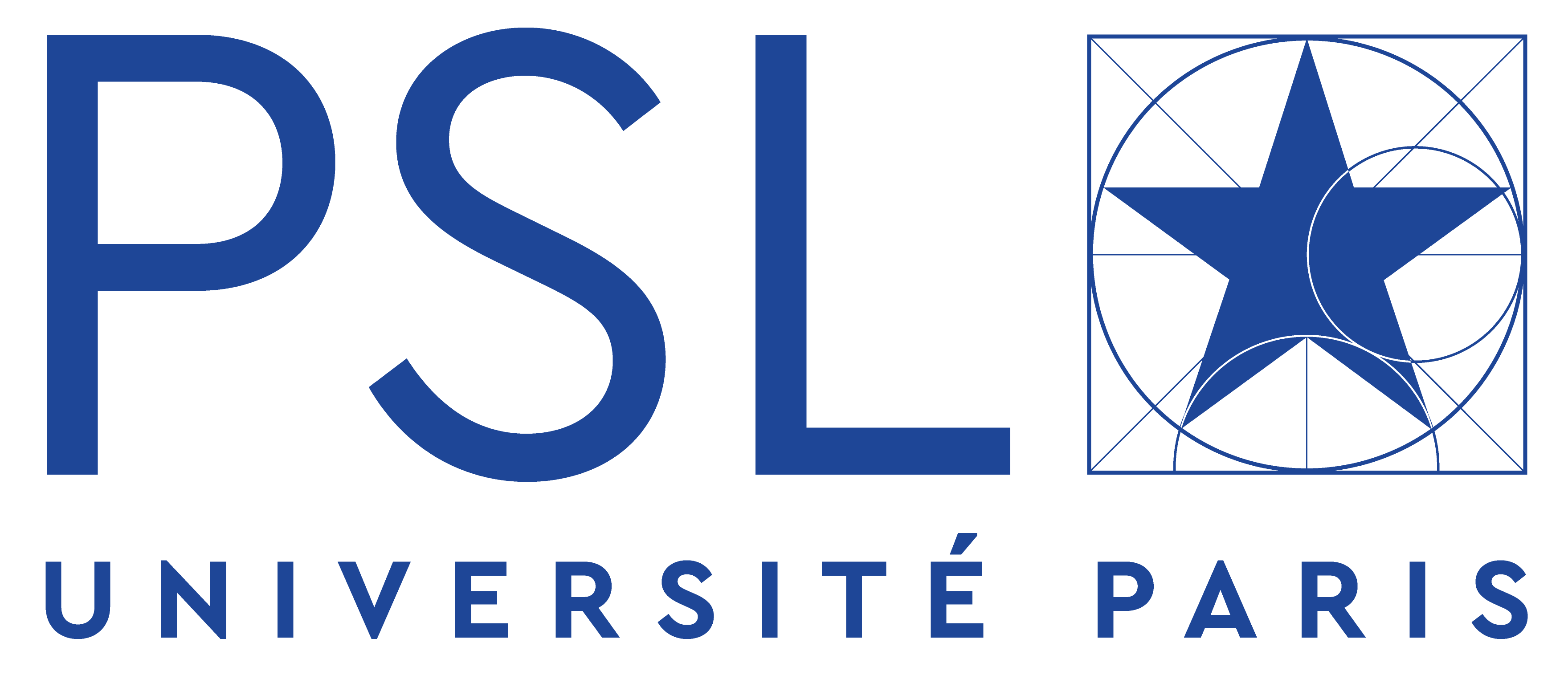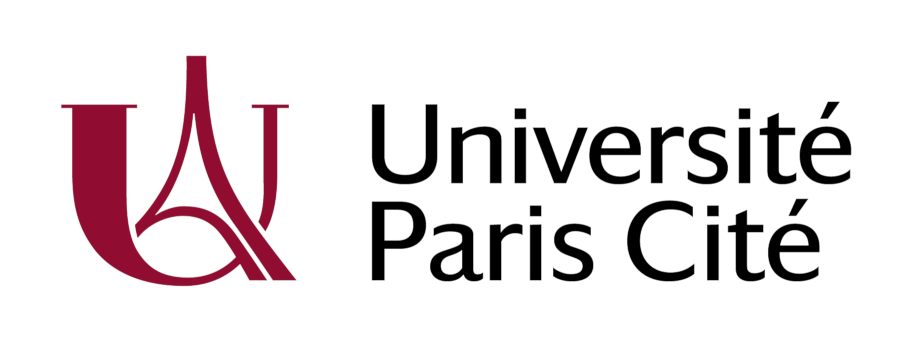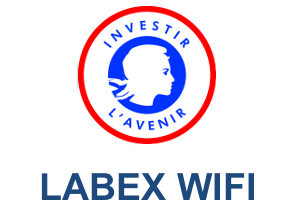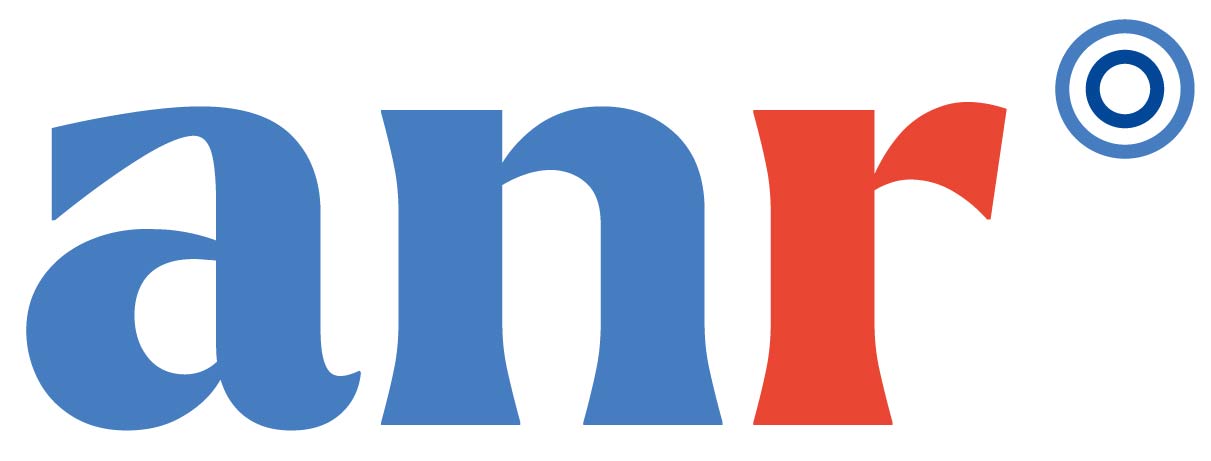Statistical Nonlinear Optical Mapping of Localized and Delocalized Plasmonic Modes in Disordered Gold Metasurfaces
Roubaud, G., S. Bidault, S. Gigan, and S. Grésillon
ACS Photonics 8, no. 7, 1937-1943 (2021)
Résumé: Using a statistical analysis of nonlinear luminescence images measured with randomly wavefront-shaped femtosecond excitations, we provide direct insight on both the localized and delocalized plasmonic modes featured by disordered gold metasurfaces. We can independently image areas where far-field wavefront shaping can control the optical properties and areas with strong subwavelength optical hotspots. In practice, the fraction of the disordered plasmonic surface on which wavefront control is feasible depends strongly on the nanoscale morphology of the sample. Close to the percolation threshold, the entire surface is sensitive to wavefront shaping, and we observe the largest densities of delocalized modes as well as the strongest optical hotspots. These results demonstrate how statistical imaging schemes can offset the complexity of disordered nanophotonic systems in order to characterize their optical properties.
|


|
Far-Field Wavefront Control of Nonlinear Luminescence in Disordered Gold Metasurfaces
Roubaud, G., P. Bondareff, G. Volpe, S. Gigan, S. Bidault, and S. Grésillon
Nano Letters 20, no. 5, 3291-3298 (2020)

Résumé: We demonstrate the local optimization of nonlinear luminescence from disordered gold metasurfaces by shaping the phase of femtosecond excitation. This process is enabled by the far-field wavefront control of plasmonic modes delocalized over the sample surface, leading to a coherent enhancement of subwavelength electric fields. In practice, the increase in nonlinear luminescence is strongly sensitive to both the nanometer-scale morphology and the level of structural complexity of the gold metasurface. We typically observe a 2 orders of magnitude enhancement of the luminescence signal for an optimized excitation wavefront compared to a random one. These results demonstrate how disordered metasurfaces made of randomly coupled plasmonic resonators, together with wavefront shaping, provide numerous degrees of freedom to program locally optimized nonlinear responses and optical hotspots.
Mots-clés: disordered media; metasurfaces; nonlinear luminescence; plasmonics; Wavefront shaping
|

|
Far-field wavefront optimization of the optical near-field in nanoscale disordered plasmonic metasurfaces
Roubaud, G., S. Bidault, S. Gigan, and S. Gresillon
2019 Conference on Lasers and Electro-Optics Europe and European Quantum Electronics Conference, CLEO/Europe-EQEC 2019 (2019)
Résumé: © 2019 IEEE. Plasmonic nanoantennas featuring nanoscale gaps can exhibit strongly enhanced optical near-fields that have been extensively used in surface enhanced spectroscopy (Raman and Fluorescence) and in biosensing. However, deterministic nanostructures do not provide enough degrees of freedom to control optically these local field enhancements. By comparison, wavefront shaping techniques in disordered scattering media provide numerous degrees of freedom to control light focusing in space and time [1]. To associate local field enhancements and far-field wavefront control, we use disordered plasmonic surfaces close to the percolation threshold (see Fig. 1-a) that feature both hotspots [2] and delocalized plasmon modes. Disordered plasmonic surfaces can be controlled using a spatial light modulator [3].
|

|
Spatiotemporal Coherent Control of Light through a Multiple Scattering Medium with the Multispectral Transmission Matrix
Mounaix, M., D. Andreoli, H. Defienne, G. Volpe, O. Katz, S. Gresillon, and S. Gigan
Physical Review Letters 116, no. 25 (2016)
|

|
Probing Extended Modes on Disordered Plasmonic Networks by Wavefront Shaping
Bondareff, P., G. Volpe, S. Gigan, and S. Gresillon
ACS Photonics 2, no. 12, 1661-1662 (2015)
Résumé: © 2015 American Chemical Society. We experimentally study the optical field distribution on disordered plasmonic networks by far-field wavefront shaping. We observe nonlocal fluctuations of the field intensity mediated by plasmonic modes up to a distance of 10 μm from the excitation area. In particular we quantify the spatial extent of these fluctuations as a function of the metal filling fraction in the plasmonic network, and we identify a clear increase around percolation due to the existence of extended plasmonic modes. This paves the way toward far-field coherent control of plasmonic modes on similar disordered plasmonic networks. We expect these results to be relevant for quantum networks, coherent control, and light-matter interactions in such disordered films where long-range interactions are critical.
Mots-clés: disorder; far-field control; leaky wave microscopy; mode extension; plasmonic networks; surface plasmon; surface wave; wavefront shaping
|

|
Deterministic control of broadband light through a multiply scattering medium via the multispectral transmission matrix.
Andreoli, D., G. Volpe, S. Popoff, O. Katz, S. Gresillon, and S. Gigan
Scientific reports 5, 10347 (2015)
|


|
Direct determination of diffusion properties of random media from speckle contrast
Curry, N., P. Bondareff, M. Leclercq, N. F. Van Hulst, R. Sapienza, S. Gigan, and S. Grésillon
Optics Letters 36, no. 17, 3332-3334 (2011)
Résumé: We present a simple scheme to determine the diffusion properties of a thin slab of strongly scattering material by measuring the speckle contrast resulting from the transmission of a femtosecond pulse with controlled bandwidth. In contrast with previous methods, our scheme does not require time measurements nor interferometry. It is well adapted to the characterization of samples for pulse shaping, nonlinear excitation through scattering media, and biological imaging. © 2011 Optical Society of America.
Mots-clés: Biological imaging; Diffusion properties; Direct determination; Femtosecond pulse; Nonlinear excitation; Pulse-shaping; Random media; Scattering materials; Scattering media; Thin slab; Electromagnetic pulse; Scattering; Slab mills; Speckle; Contrast media
|


|
Low temperature near-field scanning optical microscopy of IR and THz surface-plasmon quantum cascade lasers
Moldovan-Doyen, I., A. Babuty, A. Bousseksou, R. Colombelli, S. Grésillon, and Y. De Wilde
Lasers and Electro-Optics/Quantum Electronics and Laser Science Conference: 2010 Laser Science to Photonic Applications, CLEO/QELS 2010 (2010)
Résumé: We present the first scattering type near-field scanning optical microscope operating at low temperature. This instrument is ideal to study infrared and terahertz QCLs combined with metallic photonic crystal resonators and surface plasmon waveguides. © 2010 Optical Society of America.
Mots-clés: Low temperatures; Metallic photonic crystals; Near-field scanning optical microscope; Surface plasmon waveguide; Surface-plasmon; Tera Hertz; Photonic crystals; Plasmons; Quantum cascade lasers; Near field scanning optical microscopy
|
|
Nanoparticle for active plasmonic device
Delahaye, J., S. Gresillon, and E. Fort
Proceedings of SPIE - The International Society for Optical Engineering 7608 (2010)

Résumé: Active plasmonic devices are much promising for optical devices and circuits at the nanoscale. We show that single nanoparticles coupled to metallic surfaces are good candidates for integrated components with nanometric dimensions. The localized plasmon of the nanoparticle launches propagating surface plasmons in the metallic thin film. Direct particle observation using leaky wave microscope geometry permits easy detection through the interference of the direct transmitted excitation light and the surface plasmon leaky mode. Investigations of the optical response of a nanoparticle deposited on metallic thin metal films reveals unexpectedly high transmission of light associated to contrast inversion in the images. © 2010 Copyright SPIE - The International Society for Optical Engineering.
Mots-clés: Leaky wave; Metal particle; Microscopy; Plasmon; Polariton; Excitation light; High transmission; Leaky modes; Leaky waves; Metal particle; Metallic surface; Metallic thin films; Nano scale; Nanometric dimensions; Optical response; Plasmon-polaritons; Plasmonic devices; Single nanoparticle; Surface plasmons; Thin metal films; Light transmission; Metallic compounds; Nanoparticles; Nanophotonics; Nanotechnology; Optical data storage; Optical instruments; Phonons; Photons; Quantum theory; Plasmons
|

|
Fluorescence correlation spectroscopy on nano-fakir surfaces
Delahaye, J., S. Gresillon, S. Lévêque-Fort, N. Sojic, and E. Fort
Progress in Biomedical Optics and Imaging - Proceedings of SPIE 7571 (2010)

Résumé: Single biomolecule behaviour can reveal crucial information about processes not accessible by ensemble measurements. It thus represents a real biotechnological challenge. Common optical microscopy approaches require pico- to nano-molar concentrations in order to isolate an individual molecule in the observation volume. However, biologically relevant conditions often involve micromolar concentrations, which impose a drastic reduction of the conventional observation volume by at least three orders of magnitude. This confinement is also crucial for mapping sub-wavelength heterogeneities in cells, which play an important role in many biological processes. We propose an original approach, which couples Fluorescence Correlation Spectroscopy (FCS), a powerful tool to retrieve essential information on single molecular behaviour, and nano-fakir substrates with strong field enhancements and confinements at their surface. These electromagnetic singularities at nanometer scale, called "hotspots", are the result of the unique optical properties of surface plasmons. They provide an elegant means for studying single-molecule dynamics at high concentrations by reducing dramatically the excitation volume and enhancing the fluorophore signal by several orders of magnitude. The nano-fakir substrates used are obtained from etching optical fiber bundles followed by sputtering of a gold thin-film. It allows one to design reproducible arrays of nanotips. © 2010 Copyright SPIE - The International Society for Optical Engineering.
Mots-clés: Electromagnetic enhancement; Fluorescence correlation spectroscopy; Surface plasmon; Biological process; Electromagnetic enhancement; Fluorescence Correlation Spectroscopy; High concentration; Hotspots; In-cell; Micromolar concentration; Molar concentration; Nano-meter scale; Optical fiber bundle; Orders of magnitude; Single-molecule dynamics; Strong field enhancement; Sub-wavelength; Surface plasmons; Three orders of magnitude; Electromagnetism; Fluorescence; Fluorescence spectroscopy; Molecule
|

|
Nanoparticle based integrated plasmonic component
Delahaye, J., S. Grésillon, and E. Fort
CLEO/Europe - EQEC 2009 - European Conference on Lasers and Electro-Optics and the European Quantum Electronics Conference (2009)
|

|
Narrowing of non linear enhancements in near-field images
Grésillon, S., L. Williame, E. L. Moal, E. Fort, and A. C. Boccara
Proceedings of SPIE - The International Society for Optical Engineering 6324 (2006)

Résumé: In our attempt to reveal highly localized field enhancements on random metallic films using near-field scattering probe microscopy we experimentally demonstrated the existence of narrow peaks when using a monochromatic illumination. In order to get a better understanding of the second harmonic generation taking place on such films we have undertaken the same kind of near-field experiments using femtosecond lasers sources with high peak power able to induce the non linear response. These lasers have a spectral bandwidth associated with the pulse duration, which is in the femtosecond range. With such spectral broadening we have observed, as expected, a spatial broadening of the peaks at ω, which spread over distances in the 100-500 nm range. The behavior of the peaks is quite different at 2 ω: they are found to be always very well localized (∼10 nm) despite of the polychromatic nature of the light; moreover there is no clear correlation between the peaks position at ω and those at 2 ω. This observation indicates, as often underlined in non linear processes, that coherent interactions involving a distribution of available frequencies in the lasers spectra take place. These frequencies ωn, coherently induce second harmonic generation as long as ωn + ωm = 2 ω.
Mots-clés: Electromagnetic enhancement; Local second harmonic generation; Metal dielectric films; Near-field optics; Laser pulses; Metallic films; Monochromators; Near field scanning optical microscopy; Second harmonic generation; Electromagnetic enhancement; Local second harmonic generation; Metal dielectric films; Near field optics; Image enhancement
|

|
Imaging subwavelength holes in chromium films in scanning near-field optical microscopy. Comparison between experiments and calculation
Ducourtieux, S., S. Grésillon, J. C. Rivoal, C. Vannier, C. Bainier, D. Courjon, and H. Cory
EPJ Applied Physics 26, no. 1, 35-43 (2004)
Résumé: Near-field optical signals are imaged in the vicinity of nano-holes using two different near-field optical microscopes. The experimental results are compared with electromagnetic field calculations based on a modal approximation. It turns out that an optical fibre detects the Poynting vector whereas the apertureless tip is sensitive to the field amplitude. © EDP Sciences.
Mots-clés: Approximation theory; Electromagnetic field effects; Optical fibers; Optical microscopy; Surfaces; Thin films; Vectors; Apertureless tip; Field amplitude; Imaging subwavelength holes; Poynting vector; Scanning near field optical microscopy; Chromium
|

|
Near-field optical studies of semicontinuous metal films
Ducourtieux, S., V. A. Podolskiy, S. Grésillon, S. Buil, B. Berini, P. Gadenne, A. C. Boccara, J. C. Rivoal, W. D. Bragg, K. Banerjee, V. P. Safonov, V. P. Drachev, Z. C. Ying, A. K. Sarychev, and V. M. Shalaev
Physical Review B - Condensed Matter and Materials Physics 64, no. 16, 1654031-16540314 (2001)

Résumé: Local field distributions in random metal-dielectric films near a percolation threshold are experimentally studied using scanning near-field optical microscopy (SNOM). The surface-plasmon oscillations in such percolation films are localized in small nanometer-scale areas, "hot spots", where the local fields are much larger than the field of an incident electromagnetic wave. The spatial positions of the hot spots vary with the wavelength and polarization of the incident beam. Local near-field spectroscopy of the hot spots is performed using our SNOM. It is shown that the resonance quality-factor of hot spots increases from the visible to the infrared. Giant local optical activity associated with chiral plasmon modes has been obtained. The hot spot's large local fields may result in local, frequency and spatially selective photomodification of percolation films.
Mots-clés: metal; article; dielectric constant; electromagnetic field; film; microscopy; molecular interaction; oscillation; polarization; spectroscopy; surface plasmon resonance
|
|
Experimental observation of percolation-enhanced nonlinear light scattering from semicontinuous metal films
Breit, M., V. A. Podolskiy, S. Grésillon, G. Von Plessen, J. Feldmann, J. C. Rivoal, P. Gadenne, A. K. Sarychev, and V. M. Shalaev
Physical Review B - Condensed Matter and Materials Physics 64, no. 12, 1251061-1251065 (2001)
Résumé: Strongly enhanced second-harmonic generation (SHG), which is characterized by a nearly isotropic intensity distribution, is observed for gold-glass films near the percolation threshold. The diffuselike SHG scattering, which can be thought of as nonlinear critical opalescence, is in sharp contrast with highly collimated linear reflection and transmission from these nanostructured semicontinuous metal films. Our observations, which can be explained by giant fluctuations of local nonlinear sources for SHG due to plasmon localization, verify recent predictions of percolation-enhanced nonlinear scattering.
Mots-clés: glass; gold; article; chemical structure; film; light scattering; nanoparticle; polarimetry; prediction; reflectometry
|
|
Nanometer scale apertureless near field microscopy
Grésillon, S., S. Ducourtieux, A. Lahrech, L. Aigouy, J. C. Rivoal, and A. C. Boccara
Applied Surface Science 164, no. 1-4, 118-123 (2000)
Résumé: It is necessary to use the information contained in the near field to get sub-wavelength details in optical imaging which are not revealed through the far-field image. We have designed and built various setups able to perform near-field measurements in the UV, visible and IR, both in transmission, reflection and dark field with a resolution of 10 nm, independent of the wavelength but related to the tip size. Images revealing local dielectric contrasts, small particle effects, as well as local field enhancements in random structures, are shown. © 2000 Published by Elsevier Science B.V.
Mots-clés: Field enhancement; Local properties; Near field
|
|
Percolation and fractal composites: Optical studies
Ducourtieux, S., S. Grésillon, A. C. Boccara, J. C. Rivoal, X. Quelin, P. Gadenne, V. P. Drachev, W. D. Bragg, V. P. Safonov, V. A. Podolskiy, Z. C. Ying, R. L. Armstrong, and V. M. Shalaev
Journal of Nonlinear Optical Physics and Materials 9, no. 1, 105-116 (2000)
Résumé: Local field distributions arc studied in random metal-dielectric films near percolation (percolation films) and fractal aggregates of colloidal particles. For both systems, it is shown that optical excitations are localized in small nanometer-scale areas, "hot spots," where the local fields are much larger than the field of an incident electromagnetic wave. The large local fields result in giant enhancement of various optical phenomena. The surface-enhanced white-light generation and second-harmonic generation have been obtained in percolation films. For fractal aggregates of silver particles, a giant effect of local optical activity has been observed. The effect is due to surface-plasmon excitations localized on chiral-active particle configurations in fractals.
|
|
Direct observation of locally enhanced electromagnetic field
Gadenne, P., X. Quelin, S. Ducourtieux, Samuel Gresillon, L. Aigouy, J.-C. Rivoal, V. Shalaev, and A. Sarychev
Physica B: Condensed Matter 279, no. 1-3, 52-55 (2000)

Résumé: Surface enhanced Raman scattering and other nonlinear enhanced optical effects are well known to be induced by the surface of discontinuous or rough metal thin films. In the percolating range of concentration, theoretical calculations lead to locally enhanced field distributions at the surface of the films, due to huge fluctuations close to the phase transition threshold. Using a scanning near-field optical microscope (SNOM) of extremely high lateral resolution (10 nm), we have been able to record the field distribution close to the surface of discontinuous gold films in both transmission and reflection modes. We report here the direct observations, at a scale much shorter than the wavelength, of the giant field peaks, the so-called `hot spots'. Their intensities and spatial distribution are found in good agreement with the theoretical predictions.
Mots-clés: Electromagnetic fields; Gold; Light reflection; Light transmission; Optical microscopy; Percolation (solid state); Raman scattering; Thin films; Anderson localization; Scanning near-field optical microscopes (SNOM); Surface enhanced Raman scattering (SERS); Surface plasmon modes; Metallic films
|

|
Nanoscale observation of enhanced electromagnetic field
Grésillon, S., J.-C. Rivoal, P. Gadenne, X. Quélin, V. Shalaev, and A. Sarychev
Physica Status Solidi (A) Applied Research 175, no. 1, 337-343 (1999)

Résumé: The surface of nanosized discontinuous or rough metal thin films is able to induce Raman scattering enhanced by several orders of magnitude. This effect has been theoretically attributed to the local field distribution at the surface of the films. As for the relevant parameter in phase transitions, the fields experience here huge fluctuations, leading to localized giant peaks so called `hot spots'. Using a Scanning Near-Field Optical Microscope (SNOM) of extremely high lateral resolution (10 nm), we have been able to record the field distribution close to the surface of gold films. We report here the first direct observation of the hot spots with such lateral resolution. Their intensities and spatial distribution are found in good agreement with the theoretical predictions. We also have performed local spectroscopy, which shows up sharp variations at nanometric scale (much smaller than the wavelength).
Mots-clés: Electromagnetic field effects; Gold; Image analysis; Image quality; Nanostructured materials; Optical microscopy; Phase transitions; Raman scattering; Surface roughness; Thin films; Nanoscale observations; Scanning near-field optical microscopy (SNOM); Metallic films
|

|
Experimental observation of localized optical excitations in random metal-dielectric films
Grésillon, S., L. Aigouy, A. C. Boccara, J. C. Rivoal, X. Quelin, C. Desmarest, P. Gadenne, V. A. Shubin, A. K. Sarychev, and V. M. Shalaev
Physical Review Letters 82, no. 22, 4520-4523 (1999)
Résumé: The localized optical excitations in random metal-dielectric films were examined by scanning near-field optical microscopy. The patterns of the observed surface plasmon modes localized in hot spots are attributed to Anderson electron localization and are found to agree with theoretical predictions.
Mots-clés: Dielectric films; Electric fields; Electron resonance; Electron transitions; Mathematical models; Metallic films; Optical microscopy; Scanning; Semiconducting films; Anderson electron localization; Optical excitation; Plasmons; Scanning near-field optical microscopy (SNOM); Optical films
|
|
Electric field diffraction by a semi-infinite perfectly conducting plane of small thickness: application to near-field microscopy
Cory, H., A. C. Boccara, J. C. Rivoal, and S. Grésillon
Microwave and Optical Technology Letters 21, no. 3, 177-183 (1999)

Résumé: A perfectly conducting half plane of finite thickness much smaller than the wavelength of the incident electromagnetic wave is investigated. The geometry of the structure is defined according to a transformation which is a particular case of the Schwarz-Christoffel transformation, representing a step with a slightly concave edge instead of the usual straight one. The solutions of the partial differential equations describing the structure are given for specific ranges of the variables, and the results obtained with this method are compared to those obtained with an independent numerical method for a step with a straight edge. Good agreement is obtained between the two sets of results, except right around the edges of the steps in the two structures, due to the different shapes involved. It is shown that the width of the structure has but a slight influence on the value of the electric field, while the angle of incidence of the incoming wave has a strong influence on this value.
Mots-clés: Diffraction; Electromagnetic fields; Electromagnetic wave propagation; Light polarization; Mathematical transformations; Numerical methods; Optical microscopy; Partial differential equations; Thickness measurement; Angle of incidence; Electric field diffraction; Electric field intensity; Near field microscopy; Electric fields
|

|
Transmission-mode apertureless near-field microscope: optical and magneto-optical studies
Grésillon, S., H. Cory, J. C. Rivoal, and A. C. Boccara
Journal of Optics A: Pure and Applied Optics 1, no. 2, 178-184 (1999)

Résumé: A new near-field optical microscope working in transmission is presented. Lateral optical resolution less than 10 nm is obtained with a pure metallic probe. Polarization images of a metallic step confirmed the good resolution by comparison with an analytical model. We also demonstrate the capability of the microscope to obtain images with polarization effects. The good resolution is used for the observation of small gold aggregates which confirm that this microscope is able to make spectroscopic measurements of the optical effect induced by a nanometric scale particle. The polarization sensibility allows us to measure near-field magneto-optical contrast on a multi-layer sample with magnetic domains. These results are promising for magneto-optical characterization with nanometre resolution.
Mots-clés: Computer simulation; Gold; Light polarization; Light transmission; Magnetic domains; Magnetooptical effects; Mathematical models; Optical resolving power; Spectroscopy; Near field optics; Near field simulation; Optical microscope; Polarization effects; Optical microscopy
|

|










